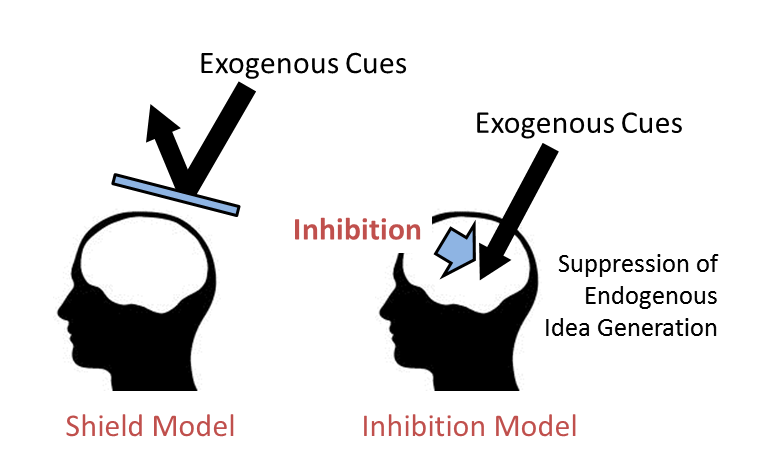When Good Ideas Come to Us, and When They Do NotMasasi Hattori
Creativity in Daily Life

While it is true that few people unremittingly pursue extremely creative activities in their profession, the opposite of this is also difficult to imagine; there is no one whose daily life is entirely composed of recalling what has been memorized. For example, even solving a trivial everyday “problem” such as opening a firmly tightened bottle lid requires a certain amount of ingenuity. When we solve such a problem, how is that good ideas arise?
We are surrounded by innumerable pieces of information that could be useful in solving problems, but we do not always take advantage of them. Research on insight and creativity is thus important from the perspective of improving everyday living environments, and has broad potential application including facilitating idea production in places where the emergence of creative ideas is expected, such as workplaces and schools. Unfortunately, however, we know little about the mechanism of insight in spite of the long history of the psychological study of creativity. The reason for this, in short, is that the topic is simply difficult, but one particularly insuperable obstacle is the fact that we do not know of an effective approach to reveal the process of idea generation.
Good Ideas Come to Us Suddenly

This obstacle is related to the difficulty of being aware of the process of idea generation. People are of course aware of the outcome, an idea, but they are not aware of the process by which this idea is generated. Good ideas seem to have come to us suddenly from somewhere else. This fact strongly suggests that important parts of the process of idea formation are implicit (i.e., beyond the purview of consciousness).
In this project, we therefore examine implicit cognitive processes using implicit cues (i.e., subliminal hints) to reveal the process of creative idea generation. An “implicit cue” refers to a cue that we cannot see or we do not notice. Methods of presenting such hints include subliminal priming and inattentional stimulation. Subliminal priming is a method of presenting hint information in such a way that it is not accompanied by an awareness of “seeing” through techniques such as visual masking. Inattentional stimulation refers to a method of presenting a hint that is itself apparent but whose relevance to the problem at hand is not noticed by the person attempting to solve it. By examining how such hints are taken in and how they promote (or impede) finding solutions, we expect that it will become possible to investigate the covert cognitive processes of the formation of ideas.
The Effectiveness of Subliminal Hints and Its Instability
We began by showing that people can utilize a subliminal hint in solving an insight problem even if they do not notice the hint (Hattori, Sloman, & Orita, 2013). This was because no studies had ever revealed that subliminal stimulation is effective when applied to a higher cognitive task such as insight problem solving. Our studies, using various insight problems, have found that the solution rate can be improved by three times in cases with a subliminal hint as compared with the cases without it.
As the research project continued, however, we realized that the effectiveness of hints is not necessarily stable. In some cases, presenting subliminal hints had almost no effect, while in other cases the solution rate even decreased. This is actually not so mysterious if we remember that when we see something we do not simply accept the information passively or mechanically, but rather actively interpret it and choose what to accept and reject. The inconsistent results thus suggest it is possible that we are (unconsciously) controlling even visual information without awareness of “seeing.”
We then investigated the relationship between cognitive load and the effectiveness of subliminal information. If people implicitly control the intake of implicit cues, exhausting cognitive resources by a load placed as a second task in problem solving can weaken the subject’s executive control and thereby enhance the effect of subliminal hints. This is an extremely counter-intuitive outcome, because a load added through this dual task technique usually worsens performance of the main task or at best keeps it at the same level. In circumstances in which subliminal hints are presented, however, it is predicted that an extra load will improve problem solving performance. The results of our experiment were in line with these predictions (Hattori & Orita, 2013). We called this the paradoxical facilitation effect of cognitive load.
The Strength and Weakness of Inhibition

The next question to be addressed was how this kind of control occurs. Here we can imagine two prototype models. One is a shield model in which implicit hints (exogenous cues) are simply screened so that they do not get in, while the other is an inhibition model in which exogenous hints enter but are not used because they are inhibited. If the latter model is correct, then we can expect that a hint toward the correct solution or the solution itself that is implicitly presented can have a negative effect on internally generating the solution because of the function of inhibition. Inhibition is usually beneficial for screening out noise, but it can be harmful in circumstances where there is a hint because the hint itself, and perhaps even similar ideas to the hint, is inhibited. The results of the experiment we conducted were in line with this prediction (Hattori, Orita, and Nishida, 2015). We called this the paradoxical suppression effect of control.
Future Research
In the near future, we plan to conduct further research on questions such as how things like personality factors, emotional factors, and environmental factors including other people become involved in the process of control or inhibition. We are also interested in how long control or inhibition persists and whether there might be something like a rebound effect. Going forward, given that cognitive resources, while responsible for accidentally unhelpful control, presumably affect the endogenous promotion of novel or good ideas, we intend to carefully examine factors such as resource allocation in creative activities.
References
Hattori, M., Sloman, S. A., & Orita, R. (2013a). Effects of subliminal hints on insight problem solving. Psychonomic Bulletin & Review, 20, 790–797. doi:10.3758/s13423-013-0389-0![]()
Hattori, M. & Orita, R. (2013). Ninchiteki fuka ga dōsatsu wo motarasutoki: Dōsatsu mondai kaiketsu ni okeru puraimingu to nijyū kadai no kōka [When a cognitive load helps yield an insight: Effects of priming and dual tasking in insight problem solving]. The 77th Annual Convention of the Japanese Psychological Association. Sapporo Convention Center, September 21st.![]()
Hattori, M., Orita, R., & Nishida, Y. (2015). Senzai tegakari ga aidea wo yokusei surutoki: Enkaku rensō ni okeru fu no ikika puraimingu kōka [When implicit cues suppress ideas: Negative subliminal priming effects on remote association]. The 13th Annual Convention of the Japanese Society for Cognitive Psychology. University of Tokyo, July 5th.![]()
Adapted from “Research Highlights” (Institute of Human Sciences, Ritsumeikan University, December, 2015).